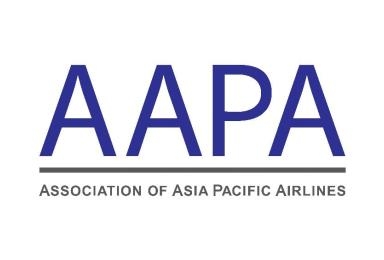Preliminary traffic figures from the Association of Asia Pacific Airlines (AAPA) show that international air passenger demand plunged in February 2020, with deepening public anxiety about the COVID19 pandemic and the abrupt imposition of travel restrictions across the world causing widespread disruptions to airline operations.
In aggregate, the region’s airlines experienced a 43.9 per cent year-on-year fall in the number of international passengers carried to a combined 17.0 million in February. As measured in revenue passenger kilometres (RPK), demand fell by 34.8 per cent, alongside a 20.6 per cent drop in available seat capacity. As a result, the average international passenger load factor tumbled by 14.4 percentage points to 66.6 per cent for the month.
Meanwhile, air cargo demand held up remarkably well, despite the effects of extended factory closures and lockdowns in China crippling the supply and distribution of manufactured goods nationwide and related international trade flows. These declines were partly offset by higher demand for air shipments of intermediate goods, including pharmaceutical and food supplies, within the region.
Overall, Asia Pacific airlines registered a three per cent year-on-year decline in international air cargo demand in freight tonne kilometres (FTK) terms in February. Comparatively, offered freight capacity fell by a sharp 13.5 per cent, with belly-hold capacity declining in tandem with the progressive cuts in the number of passenger flights over the course of the month. As a result, the average international freight load factor increased by 6.5 percentage points to 60.3 per cent for the month.
Andrew Herdman, Director General, AAPA said, “Asian airlines saw passenger demand for international air travel demand plunge in February as a result of the rapid spread of the COVID19 coronavirus pandemic. Overall, for the first two months of the year, the number of international passengers travelling on Asian airlines fell by 21 per cent to 50 million passengers. During the same period, international air cargo demand fell by a relatively modest five per cent, under challenging business conditions resulting from disruptions to production and logistics supply from large exporting markets in the region. Since February, we have seen a further sharp deterioration in the overall situation. As COVID19 became a global pandemic, severe travel restrictions and falling demand have forced steep capacity cuts across the majority of airline route networks, with some airlines virtually halting all international flights, whilst others are planning to maintain minimal levels of connectivity by operating a small number of passenger services in the coming months. Asian airlines are also working closely with governments and related stakeholders to mount a number of humanitarian and evacuation flights to bring home stranded nationals.”
Herdman added, “Meanwhile, demand for air cargo remains relatively unaffected, and every effort is being made to ensure that shipments of critical relief supplies including medical equipment, and food products can continue to be transported safely and efficiently around the world. Asian airlines account for over one third of global air cargo flows and operate large numbers of dedicated freighter aircraft. The sharp fall in passenger services has removed significant belly-cargo capacity from the marketplace. A number of airlines are now operating supplementary cargo services using passenger aircraft to meet the demand. The COVID19 pandemic has posed unprecedented challenges, both operational and financial, to the airline industry and the wider travel and tourism sector worldwide. Whilst some governments have moved quickly to provide measures of financial support, much more needs to be done to reduce the risks of permanent damage to critical sectors of the economy.”






